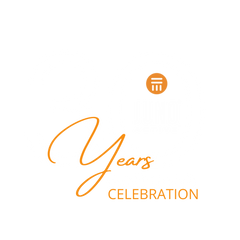Our #ThisIsActive Q+As are part of an ongoing series to show how plus size women live their active lives. Share your active life with us on social media by using #ThisIsActive on Instagram or send your story to social @ junoactive.com for a chance to be featured.
Ani is a self-described fat activist, registered Dietitian-to-be, and proud YogaQuest teacher. She is currently working on her Master’s in Public Health Nutrition and has found a passion in helping people of all sizes find compassionate and research-based care. After getting hooked by the open and accessible nature of yoga at YogaQuest, Ani discovered yet another way to bring health to people of larger sizes though teaching yoga. Yoga has been a key part of Ani’s self-care to manage anxiety and depression, improve body image and body confidence, and find joyful movement.
If you’re in the Minneapolis area, check out her Hunger Games yoga series running now until the end of December 2017. Nov. 30, Dec. 7, Dec. 14.
1. How did you get started teaching yoga?
I really ended up in training kind of unexpectedly. I’ve always enjoyed practicing yoga, but never saw myself as a teacher. But after discovering YogaQuest, I saw how powerful it was to have teachers that represented me. Both in body size/shape, but also just in similar ways of approaching yoga overall. So, when YogaQuest started recruiting for their body positive, trauma-informed, narrative yoga teacher training, I got really excited about the prospect of teaching yoga to my community.
2. Why is it important to guide an exercise class with body positive principles?
To me, body positive principles in a yoga class are important for so many reasons. First of all, safety. In traditional yoga spaces, there can be pressure to perform yoga poses in very specific ways, even though our bodies come in so many different shapes, sizes, and configurations. Even some as simple as how the leg bone articulates with the hip bone means that the angles it can make will be different from person to person. So, emphasizing that we all have different bodies – which means poses will look different – is critical for avoiding injury. In addition, and no less important, yoga is truly for every body type and not just for the slender/white/female among us. When we only show that one body type, it drives away 90% of people from the practice of yoga, even though we can all benefit from the practice no matter what our body looks like, today or ever.
3. How did you get involved in Narrative Yoga, and what is it exactly?
Narrative yoga, at it’s most basic, is weaving a story through a yoga practice. I was not seeking out narrative yoga when I found YogaQuest. They were one of the only body positive studios in the area and the only studio that specifically promoted Health At Every Size (TM). They also happened to be a geeky yoga studio that used stories as a way to connect with their students. And stories are really universal. The use of narratives made the connections so much more meaningful and made yoga more than just a physical practice – it was about connection with a story and through that connection, we were building a community around stories that were meaningful to all of us.
4. How have the narrative yoga classes opened up yoga to new people who may have never tried it?
YogaQuest uses narratives to bring together nerds. By focusing on superheroes, fantasy and science fiction stories, it makes yoga more accessible to a group of people who often feel unwelcome in traditional yoga spaces. But using narratives in a yogic context isn’t exclusive to the geek community; really any population can benefit. I’m working on a body positive class using narratives, and thus bringing together people who don’t look like the yoga students in yoga ads.
5. Where do you see the future of creative yoga going?
More studios are opening up to this concept, but it’s still pretty rare to find. My yoga studio, YogaQuest is offering the first ever Yogiography(TM) training, which will hopefully get more yoga teachers interested in and able to integrate narratives into their yoga classes.
6. Do you have any advice for people who are interested in trying yoga classes but are nervous/afraid because they’ve never been, might not have the right clothes, etc.?
My advice to folks wanting to try yoga, but nervous about actually going to a studio is to do the research. Search for studios that espouse your values and then check out their website and social media. You can tell a lot about the atmosphere by what they post and what they say about themselves. Look for classes that go at a slower pace, especially at first, so you can get familiar with some basic poses. Classes called slow flow or gentle yoga are usually good introductions. In the Twin Cities, we’re lucky to have several classes geared towards students in larger bodies. Those classes are usually called Curvy Yoga (a specialized training), Plus Size Yoga, or Yoga for larger bodies.
7. What are your favorite JunoActive pieces to workout in, and what kind of outfit do you recommend for first time yogis?
I personally love anything that is more form fitting for bottoms, like the QuikWik leggings or capris. As for top, I like a looser fit for easy movement, but nothing too billowy that would creep up during those forward folds and downdogs! Items like the
Stretch Naturals Crossback Tank With Bra work great for yoga. But, whatever you chose should make you feel comfortable! That’s most important.


